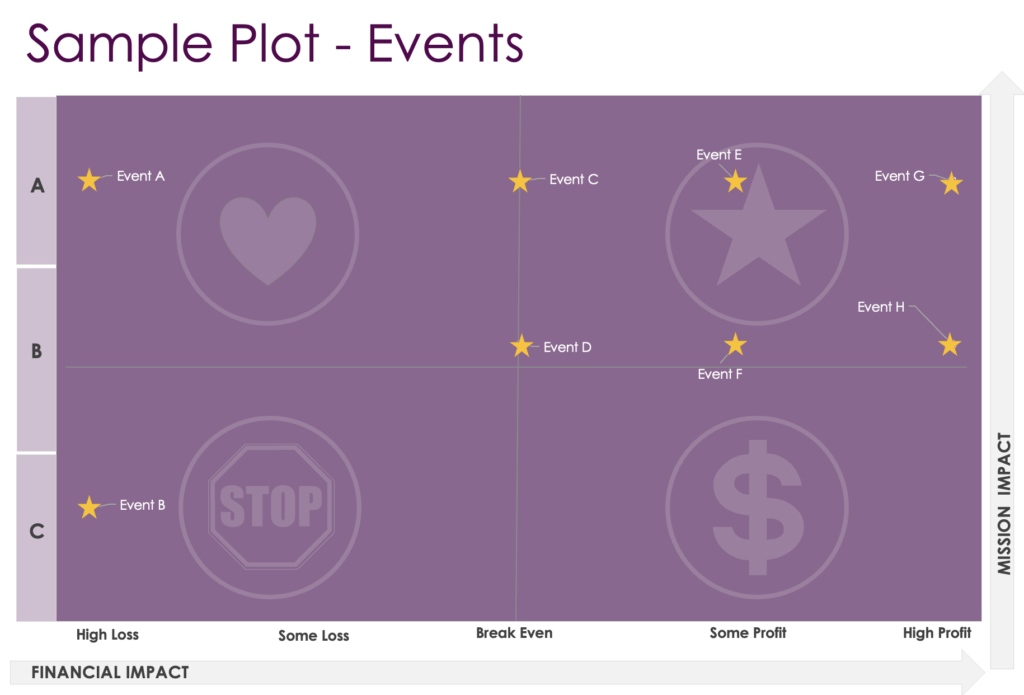
When I started with the nonprofit Phoenix House right out of college, I was an idealist. I pursued any program and every grant that would help our clients. I believed success would come from the quantity of grants submitted. Now, with nearly three decades of experience, I am much more of a pragmatist. I realized that you cannot chase every opportunity, and yet, you need to be open to possibilities. Either way, you need a system to ensure that you are practical about the pursuit and focused on results over effort.
Sustainability is the buzzword in the social sector. Sustainability happens on three different levels:
Programmatic
Your organization has a sophisticated program development process (such as social alchemy or lean startup) to move from innovation to impact and scale AND you are responsive to both community and client needs (through market and customer research).
Financial
Your organization generates resources to support its needs and wishes without compromising its future.
Organizational
Your organization is able to adapt and change as social shifts occur.
In making decisions about programs, policy efforts and collaborations via grants, you need two approaches: 1) a proactive approach that allows you to intentionally raise money to support innovative programs and needs, and 2) a more reactive approach that allows you to be opportunistic and strategically pursue interests that are aligned with your mission. Taken together, this creates a grant decision-making system that helps you move away from feeling like you are chasing money and move toward building a purposeful process that ensures that your important programs flourish.
Most of us are familiar with the reactive approach – applying for grants. However, we have found that most organizations do not have an annual process to assist them with a proactive approach. Our favorite tool to accomplish this goal is the Mission-Money Matrix. Often in the social sector, just like in the movie “Field of Dreams,” we fall in love with a program and assume “if we build it, they will come.” Even if this is true and people come, we need to ensure that money follows. This is why the Mission-Money Matrix is a great tool for evaluating where your organization stands in each and every endeavor and determining where you want it to go.
Based on the Boston Consulting Group Project Matrix, the Mission-Money Matrix, is a visual tool that allows you to understand, discuss and strategically decide when it is best to pursue grants and other fundraising tools to support programs. The steps are straightforward:
- First, identify your portfolio, which can include possible programs, other efforts, such as policy change, social enterprise and collaborations, and even fundraising events.
- Second, calculate net financial return, which will lead to a financial gain, loss or break even in real numbers. Just be sure to include both direct and indirect costs. We have found that a breakeven analysis is the easiest way to produce a relative assessment in the portfolio.
- Third, evaluate mission impact – such as alignment, impact and reach (often found in your logic model). We have found that an A-C score is the easiest way to produce a relative assessment.
- Fourth, plot on the matrix with financial return on the horizontal and mission impact on the vertical.
When you reveal where each program falls, you can determine the best next steps to strengthen your position:
- On the top right, you have the perfect mix of high mission impact and high financial return programs – the Stars. You want to invest and grow these programs as well as attract attention to them.
- On the top left, you have high mission impact but low financial return programs – the Hearts. You want to find ways to control costs and limit financial risk for these programs as well as seek grants to subsidize them. You can afford some Hearts, but not many.
- On the bottom right, you have low mission impact, but high financial return programs – the Money Trees. You want to find ways to boost impact and grow these programs.
- On the bottom left, you have low mission impact and low financial return programs – the Question Marks. You may need to evaluate the role of these programs in the portfolio and either work to improve their value or consider divesting them to another agency.
To help with this process, we have put together an Excel spreadsheet for programs and events to help you capture the information needed and visualize your programs’ placement on the mission-money matrix. The goal is a portfolio mix that leverages different funding streams and maximizes impact for your clients and community. Through this process, you can increase program stability and reduce the impact of funding volatility.
This process also makes it clear where grant funding is needed to support the program’s and organization’s sustainability, which should also be connected to the fundraising plan as well as staff performance objectives. In addition, the process allows fundraising staff to include their own ratings of the overall fundraising performance of the program. The Matrix brings clarity to this discussion and creates a proactive strategy to build a grant pipeline that supports your organization’s most important work and, ultimately, a more sustainable way of doing business.
We recommend that this process be conducted annually – ideally in the last few months of the fiscal year. This will help you develop a cohesive program and fundraising plan for the next year and set budget projections that are tied to an analytical framework and dashboard that can be tracked throughout the fiscal year. It can also be done in conjunction with strategic planning, while you are evaluating current and future programs or initiatives. We would love to hear how you make more proactive programming decisions in your organization and if the Matrix is helpful to you.


outstanding information. needed and implementing ideas